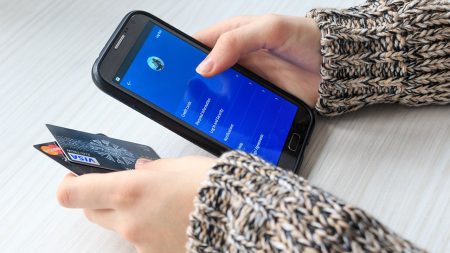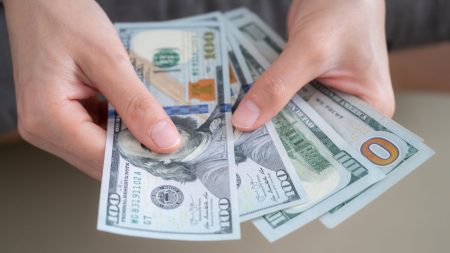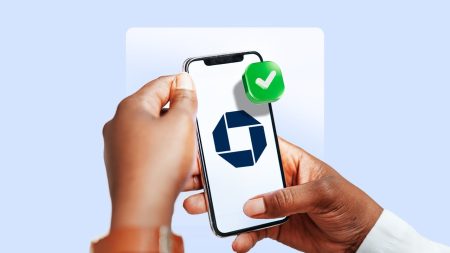Key takeaways
- Most unemployment payment delays happen due to missing information, fraud checks, or system backlogs.
- You can often fix the issue by verifying your ID, submitting missing documentation, or updating your payment profile.
- While you wait, contact lenders to negotiate temporary relief and use savings accounts or short-term loans strategically.
When you’re unemployed, every day without benefits matters. With more than 7 million Americans currently receiving unemployment payments, backlogs and verification checks are common.
Economists expect the unemployment rate to rise from its current level of 4.1 percent to 4.6 percent in June 2026, according to Bankrate’s Economic Indicator Poll.
But there’s usually a fix. Here’s why your unemployment payment might be late — and how to get it moving again.
1. State systems are backlogged
State unemployment offices are often overwhelmed, running on outdated technology that can’t process the volume of claims. Even if you’re approved, delays can occur while administrators verify your work history and wages.
“People who are waiting on these payments are people who are relying on meager state UI benefits. They almost universally are being forced to make the choice between several terrible decisions, whether it’s getting a payday loan, putting money on credit cards, not paying rent, not buying medicine or not buying all the food they need. All of that is really scary.”
— Michele Evermore, senior fellow at The Century Foundation
If your state’s system is slow:
- Log in weekly to your state portal for updates.
- Call early or late in the day to reach an agent faster.
- Contact your state representative’s office if the delay drags on — they can sometimes expedite stalled claims.
Worried about unemployment? Examine your savings and credit cards needs now.
2. Your application was flagged for review
If your reason for job loss is unclear, your claim might be automatically flagged. For example, quitting after an injury may appear “voluntary,” triggering manual review.
In that case, your claim goes to an adjudicator — and payments pause until it’s cleared.
How to fix it: Submit any documents (like termination letters or medical notes) that clarify why you left your job. Follow up by phone to confirm receipt.
3. Fraud prevention measures are slowing things down
State unemployment offices have been hit massively with fraud in recent years, and many states added extra ID verification layers. If your identity hasn’t been fully confirmed, your payment will stall.
What to do:
- Upload a clear photo of your ID or driver’s license.
- Verify your identity via your state’s chosen vendor (such as ID.me).
- If you suspect identity theft, report it immediately at IdentityTheft.gov.
→ See how to protect your identity from fraud.
4. You’re missing required documentation
While every state has individual documentation requirements, most applicants are generally required to submit their Social Security number, driver’s license, information about their employer, reason for leaving, first and last day worked, among other questions.
If you’re missing any of these documents or forgot to include something with your application that your individual state specifically requests, it might be holding up your claims.
5. Your payment info needs an update
Perhaps your delay is as simple as not providing a preferred payment method for your weekly benefit. When you first apply for benefits, you’re also asked to provide information about your bank, including your routing and account numbers for direct deposit.
Labor Department officials have said that having a bank account on file can speed the process, but that’s not possible for the near 20 percent of U.S. households who are either unbanked or underbanked. In those instances, your state department might be preparing a debit card or prepaid card that you can use to access your benefits, which will likely take time.
6. You forgot to certify your weekly eligibility
In many states, you must “recertify” weekly — confirming you’re still unemployed and available for work. Skip a week, and your payments stop automatically.
How to fix it: Log in weekly to check off your job search certification. It’s often the quickest fix for a stalled payment.
What to do if your payment is still delayed
If you’ve gone through the list above and still haven’t received your money, here’s what to do next:
1. Contact your state unemployment office
In most cases, it can help to speak with a representative at your state’s unemployment office. They can help you identify any problems in your application and perhaps speed up the process.
If you’re still waiting on an approval, it might also be worth a shot to reach out and see if they can review your application while you’re on the phone. That might help you obtain those extra benefits, depending on what state you live in, before they run out.
“For those who are still struggling to receive payments, they should do their best to get in touch with a real person in the agency responsible to understand the source of the bottleneck. If that effort isn’t successful, contact a local or state elected official to ask for their assistance to try to break through the logjam.”
— Mark Hamrick, Bankrate’s senior economic analyst and Washington bureau chief
2. Submit updated ID or forms
In instances when you’re worried about being vetted for fraud or missing documents, it’s worthwhile to log into your unemployment application and submit any new documentation. You should also consider uploading a new picture of your ID or another form of identification that your state agency can use to verify your claims.
3. Update your payment method
That also goes for updating your payment profile. If you perhaps forgot to submit your direct deposit information or got a new bank account since applying for your benefits, be sure to log back in to your online account or work with a representative in person or over the phone to update that information as quickly as possible.
4. Contact your lenders
In the meantime, while you wait for your payments, review your budget and make a list of everyone you regularly pay a bill to and work with. It’s worth reaching out to all of those lenders and firms to see if they might be able to help work out a payment plan while you await more income through UI.
They also might be able to reduce your monthly payment.
Looking at your recurring debits can help you find money to save. For instance, if you no longer watch a streaming service or go to the gym, cutting these expenses can be savings opportunities.
5. Reapply if you’re denied
Most experts are in agreement that you should always re-apply if you believe you were mistakenly denied a benefit. Whether it was a mistake on the state agency’s end or your own, filing again is worth a shot.
6. Get your representatives involved
Unfortunately, however, waiting for your UI benefits is often just a waiting game.
But you’re not entirely defenseless while you wait for your payments. Evermore recommends reaching out to your state representatives and lawmakers, letting them know about the issues you’ve faced. That way, you bring the problems to their attention and they feel more pressure to make changes.
While you wait: Manage your money strategically
Even short-term unemployment can stretch your finances. While you wait for your benefits:
Bottom line
A delayed unemployment payment can feel devastating — but most issues are fixable. Start by verifying your documentation, checking your payment method, and calling your state office directly.
And while you wait, stabilize your finances by tapping savings, contacting creditors, and using short-term financial tools wisely. The key is persistence: stay on top of your claim, follow up weekly, and keep records. The sooner you act, the faster your benefits will arrive.
Why we ask for feedback
Your feedback helps us improve our content and services. It takes less than a minute to
complete.
Your responses are anonymous and will only be used for improving our website.
Help us improve our content
Read the full article here









